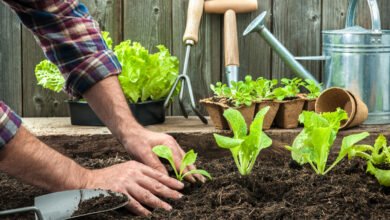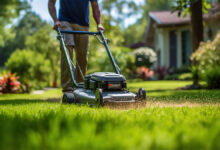Bonsai Tree : Growing, Pruning, and Sculpting Miniature Masterpieces

Bonsai trees are more than just potted plants—they are living works of art that embody patience, precision, and a deep appreciation for nature. This ancient horticultural practice transforms ordinary trees into miniature versions of majestic full-grown trees, evoking a sense of harmony and timeless beauty.
Whether you’re a beginner or an experienced bonsai enthusiast, this guide will cover everything you need to know about growing, pruning, sculpting, and caring for a bonsai tree—ensuring your tree flourishes for years to come.
What is a Bonsai Tree?
A bonsai tree is a carefully cultivated miniature tree that mimics the shape, scale, and grandeur of a full-sized tree in nature. The word “bonsai” comes from the Japanese terms “bon” (tray) and “sai” (planting), meaning “tree in a pot.”
However, bonsai is far more than just planting a tree in a container—it’s an art form that blends horticulture, sculpture, and design. The goal is to create an aesthetically balanced tree that appears mature, weathered, and naturally shaped—despite its small size.
Properties of a Bonsai Tree:
To achieve the iconic bonsai look, certain elements are carefully cultivated:
Strong Root Structure: Roots spread out in all directions, ensuring balance and stability.
Tapered Trunk: The trunk should be thick at the base and gradually taper as it rises, creating an illusion of age and strength.
Defined Apex: The top of the tree (apex) must be clearly visible, adding height and symmetry.
Well-Placed Branches: Bonsai trees have carefully positioned branches to enhance visual harmony.
Complementary Pot: The bonsai container is chosen to enhance the tree’s beauty and provide adequate root space.
How to Grow a Bonsai Tree
Growing a bonsai tree requires careful selection, proper planting, and consistent maintenance. Follow these steps to cultivate a thriving bonsai.
Step 1: Choose the Right Tree Species
Selecting the right plant species is crucial, as some trees adapt better to bonsai cultivation than others.
🔹 Best Trees for Bonsai:
- Juniper – Ideal for beginners, hardy and easy to shape.
- Ficus – Excellent indoor bonsai with high resilience.
- Maple – Beautiful seasonal color changes, best for outdoor bonsai.
- Pine – Classic bonsai species, requires patience and care.
- Boxwood – Dense foliage, perfect for intricate shaping.
Tip: Choose a species that suits your climate and lifestyle. Indoor bonsai require different care than outdoor varieties.
Step 2: Select the Right Bonsai Pot & Soil
Pot: The container should have proper drainage holes to prevent root rot. A well-chosen pot enhances the overall look of your tree.
Soil Mix: A proper bonsai soil blend should provide good drainage, aeration, and moisture retention. The ideal mix includes:
Akadama (for water retention)
Pumice (for aeration)
Lava rock (for drainage)
Tip: Avoid regular garden soil—it compacts too much and suffocates the roots.
How to Care for a Bonsai Tree
Proper bonsai care involves pruning, sculpting, watering, and occasional repotting to maintain its miniature form.
1. Pruning: The Key to Bonsai Shape
Why prune?
Pruning controls growth, maintains the shape, and enhances the tree’s natural beauty.
Types of Bonsai Pruning:
🔹 Maintenance Pruning – Regularly removing excess growth, dead leaves, and weak branches to keep the tree tidy.
🔹 Structural Pruning – Removing larger branches to define the tree’s long-term shape and aesthetic balance.
Tip: Always use sharp bonsai shears to prevent damage. Cut at an angle to encourage healthy regrowth.
2. Wiring for Sculpting
What is wiring?
Wiring is a technique where aluminum or copper wire is wrapped around branches and the trunk to shape their growth.
Helps create elegant bends and curves.
Directs growth for a more mature, natural appearance.
Must be carefully monitored to avoid wire cutting into the bark.
Tip: Remove wires before they dig into the bark—usually after a few months.
3. Watering & Light Needs
Watering:
- Bonsai trees should never dry out completely.
- Water when the soil feels slightly dry (not bone dry or soggy).
- Avoid overwatering, as this can cause root rot.
Sunlight:
- Outdoor bonsai: Needs 5-6 hours of direct sunlight daily.
- Indoor bonsai: Place near a bright window with indirect light.
Tip: Humidity trays help maintain moisture levels for indoor bonsai.
4. Repotting for Healthy Growth
Bonsai trees outgrow their pots over time and require repotting to prevent root-bound issues.
✔️ When to Repot:
- Every 2-3 years for young trees.
- Every 4-5 years for older bonsai.
✔️ How to Repot:
- Remove old soil and trim the roots.
- Use fresh bonsai soil mix.
- Replant in a slightly larger pot if needed.
Popular Bonsai Styles & Shapes
Types of bonsai trees
Bonsai trees come in various artistic styles, each inspired by nature’s organic forms.
Formal Upright (Chokkan) – A straight, upright trunk with symmetrical branches.
Informal Upright (Moyogi) – A naturally curved trunk for a more relaxed look.
Cascade (Kengai) – The trunk bends downward, mimicking a tree on a cliffside.
Broom Style (Hokidachi) – A straight trunk with a full, rounded canopy.
Windswept (Fukinagashi) – A dramatic, slanted design that looks windblown.
Tip: Experiment with different styles to find one that suits your artistic vision!

The Art of Bonsai: A Journey of Patience & Mastery
Growing a bonsai tree isn’t just a hobby—it’s a lifelong journey of patience, care, and creativity. The beauty of bonsai lies in its slow, deliberate evolution—each tree tells a story, shaped by its caretaker’s hands.
By understanding the fundamentals of pruning, watering, wiring, and styling, you can cultivate a bonsai tree that will last for generations—a living masterpiece.
Read Also : Lawn Care: Expert Tips for a Beautiful Lawn








